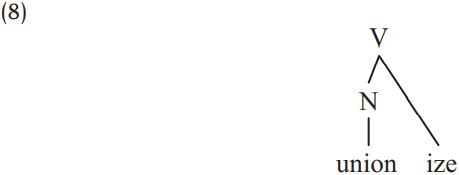

Grammar


Tenses


Present

Present Simple

Present Continuous

Present Perfect

Present Perfect Continuous


Past

Past Simple

Past Continuous

Past Perfect

Past Perfect Continuous


Future

Future Simple

Future Continuous

Future Perfect

Future Perfect Continuous


Parts Of Speech


Nouns

Countable and uncountable nouns

Verbal nouns

Singular and Plural nouns

Proper nouns

Nouns gender

Nouns definition

Concrete nouns

Abstract nouns

Common nouns

Collective nouns

Definition Of Nouns

Animate and Inanimate nouns

Nouns


Verbs

Stative and dynamic verbs

Finite and nonfinite verbs

To be verbs

Transitive and intransitive verbs

Auxiliary verbs

Modal verbs

Regular and irregular verbs

Action verbs

Verbs


Adverbs

Relative adverbs

Interrogative adverbs

Adverbs of time

Adverbs of place

Adverbs of reason

Adverbs of quantity

Adverbs of manner

Adverbs of frequency

Adverbs of affirmation

Adverbs


Adjectives

Quantitative adjective

Proper adjective

Possessive adjective

Numeral adjective

Interrogative adjective

Distributive adjective

Descriptive adjective

Demonstrative adjective


Pronouns

Subject pronoun

Relative pronoun

Reflexive pronoun

Reciprocal pronoun

Possessive pronoun

Personal pronoun

Interrogative pronoun

Indefinite pronoun

Emphatic pronoun

Distributive pronoun

Demonstrative pronoun

Pronouns


Pre Position


Preposition by function

Time preposition

Reason preposition

Possession preposition

Place preposition

Phrases preposition

Origin preposition

Measure preposition

Direction preposition

Contrast preposition

Agent preposition


Preposition by construction

Simple preposition

Phrase preposition

Double preposition

Compound preposition

prepositions


Conjunctions

Subordinating conjunction

Correlative conjunction

Coordinating conjunction

Conjunctive adverbs

conjunctions


Interjections

Express calling interjection

Phrases

Sentences


Grammar Rules

Passive and Active

Preference

Requests and offers

wishes

Be used to

Some and any

Could have done

Describing people

Giving advices

Possession

Comparative and superlative

Giving Reason

Making Suggestions

Apologizing

Forming questions

Since and for

Directions

Obligation

Adverbials

invitation

Articles

Imaginary condition

Zero conditional

First conditional

Second conditional

Third conditional

Reported speech

Demonstratives

Determiners


Linguistics

Phonetics

Phonology

Linguistics fields

Syntax

Morphology

Semantics

pragmatics

History

Writing

Grammar

Phonetics and Phonology

Semiotics


Reading Comprehension

Elementary

Intermediate

Advanced


Teaching Methods

Teaching Strategies

Assessment
The nature of morphological rules
المؤلف:
Rochelle Lieber
المصدر:
Introducing Morphology
الجزء والصفحة:
180-10
27-1-2022
1892
The nature of morphological rules
Up to this point we’ve talked about morphological rules for affixation, compounding, internal stem change and other means of creating new words, but we have only characterized those rules informally. One of the important parts of modeling the mental lexicon is to characterize morphological rules formally. In this section we will look at different formal systems for characterizing morphological rules and try to see how they make different claims about the sorts of morphology we ought to find in the languages of the world.
Morphemes as lexical items: Item and arrangement morphology
Let’s take another look at one of the informal rules of word formation that we proposed.

One way of making this sort of rule formal is to assume that in our mental lexicons the morpheme -ize has a lexical entry, just as free morphemes do, and that part of its lexical entry is the following:

The first line of this rule gives structural information: it says that -ize is a suffix that attaches to nouns or adjectives, and produces verbs. In fact, it says somewhat more than this, as the brackets indicate that when the suffix is added, a bit of hierarchical structure is formed:

The second line of the rule tells us what the resulting word means; this part of the rule can be formalized as well, using special notation, but we will not do so here. We’ll merely say that when the piece -ize is added to a base, it also adds the meaning ‘make A or make/put into N’. Finally, the third line uses the Greek letter sigma (σ) to stand for ‘syllable’, and the subscript W to stand for a ‘weak’ or unstressed syllable. This, then, encodes the information that -ize requires a base that has at least two syllables, the last of which must not bear stress.
This kind of theory in effect makes a claim that affixes are just like free morphemes in that they have lexical entries that include various types of information. The only difference between the entry for an affix and for a base is that the affix is a bound morpheme, and therefore as part of its structural information requires another category to attach to. Theories that propose rules of this sort are traditionally referred to as Item and Arrangement (IA) theories, because they claim that morphemes have independent existence in the mental lexicon with their own structural, semantic, and phonological information, and that they can be arranged hierarchically into words.
 الاكثر قراءة في Morphology
الاكثر قراءة في Morphology
 اخر الاخبار
اخر الاخبار
اخبار العتبة العباسية المقدسة

الآخبار الصحية















 قسم الشؤون الفكرية يصدر كتاباً يوثق تاريخ السدانة في العتبة العباسية المقدسة
قسم الشؤون الفكرية يصدر كتاباً يوثق تاريخ السدانة في العتبة العباسية المقدسة "المهمة".. إصدار قصصي يوثّق القصص الفائزة في مسابقة فتوى الدفاع المقدسة للقصة القصيرة
"المهمة".. إصدار قصصي يوثّق القصص الفائزة في مسابقة فتوى الدفاع المقدسة للقصة القصيرة (نوافذ).. إصدار أدبي يوثق القصص الفائزة في مسابقة الإمام العسكري (عليه السلام)
(نوافذ).. إصدار أدبي يوثق القصص الفائزة في مسابقة الإمام العسكري (عليه السلام)


















